How to make paneer/Indian cottage cheese at home?
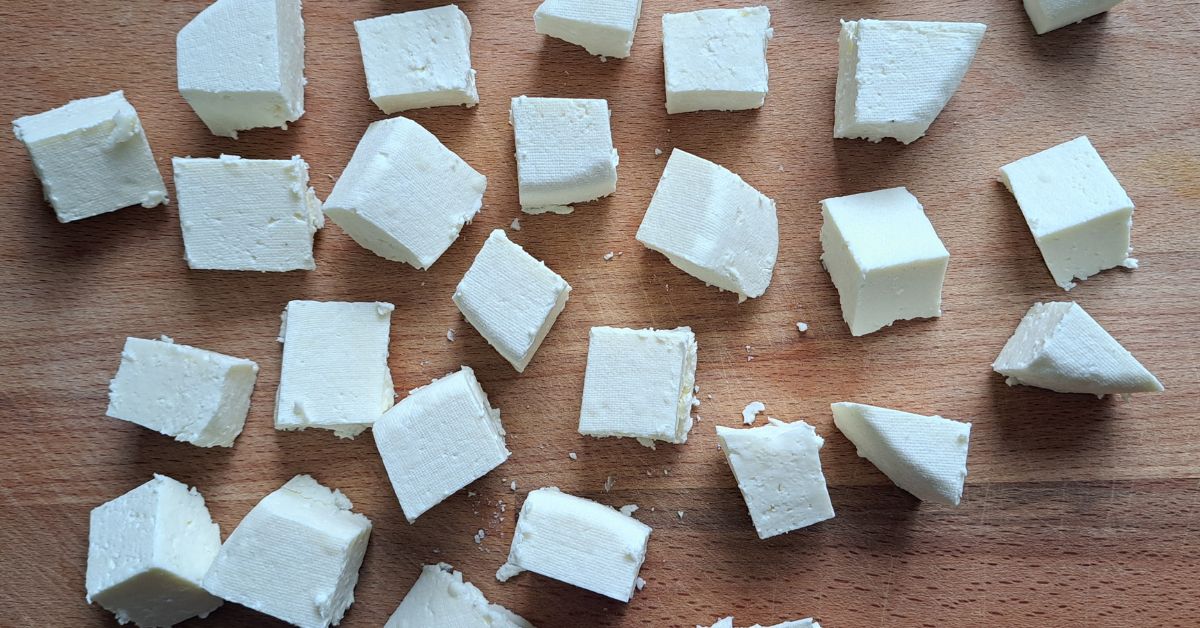
Paneer, also known as Indian cottage cheese, is a versatile and widely used ingredient in Indian cuisine. It is a fresh, non-aged cheese that can be made at home with minimal effort and just a few ingredients. Paneer is a popular choice for vegetarians and is used in a variety of dishes, from curries like Paneer Butter Masala and Palak Paneer to snacks and desserts. Homemade paneer has a fresher, more delicate flavour than store-bought versions, making it a special addition to your culinary creation. Making Indian cottage cheese at home allows you to enjoy the freshness and quality of the cheese, and it´s very easy to prepare.
Types of acids used to curdle the milk.
You can use acids to curdle the milk and separate the curds (paneer) from the whey when making homemade paneer or Indian cottage cheese. The most commonly used acids are:
Lemon Juice: Lemon juice is a popular and readily available acid used to make paneer. It imparts a slightly tangy flavour.
Vinegar: Use white vinegar as an acid to curdle the milk. Vinegar provides a milder tang compared to lemon juice.
Yoghurt: You can also use yoghurt, which contains lactic acid, to curdle the milk and make paneer. It gives a subtle tang and a creamier texture to the paneer.
Each of these acids can be used to curdle milk and make Indian cottage cheese. The choice of acid can affect the flavour and texture of the paneer, so you can choose the one that best suits your preferences. Lemon juice and vinegar are the commonly used acids due to their widespread availability and ease of use.
The amount of acid required varies depending on the type of milk you use. The amount needed is purely judgemental and add 1 tablespoon at a time with continuous stirring.
The measurements given below are approximate and what worked best for me. The yield that I received from 1.5 litres of full-fat milk was 250 gms of paneer. Again, this may vary depending on the type of milk and acid used.
Which yoghurt/curd to use for making paneer at home?
Plain Curd: Plain, unsweetened curd or yoghurt is the most commonly used option for making paneer. It contains live cultures of lactic acid bacteria, which help curdle the milk.
Homemade Curd: If you make your own curd at home, it’s an excellent choice for making paneer. Homemade curd is usually free from additives and preservatives, ensuring a pure and natural curdling agent.
Greek Yoghurt: Greek yoghurt is a thicker and creamier type of yoghurt, often with a higher fat content. It can be used to make Indian cottage cheese and will result in a creamier texture.
Sour Curd: In some recipes, you may come across recommendations to use slightly sour or older curd. The acidity in sour curd can help curdle the milk effectively and contribute to a slightly tangy flavour in the paneer.
Which is the best milk for making paneer at home?
The best type of milk for making paneer is whole milk. Whole milk has a higher fat content, around 3.25% to 3.5%, which is essential for achieving a rich and creamy texture in your homemade paneer. The higher fat content will help the curds (paneer) to hold together.
You can make paneer with reduced-fat or low-fat milk, but the texture and flavour may not be as desirable. Skim milk, which has little to no fat content, is not recommended for making paneer, as it will yield a very dry and crumbly product.
Though you can use different types of milk to make paneer, whole milk is the preferred choice for the best results in terms of taste and texture.
Click here for Paneer recipes.


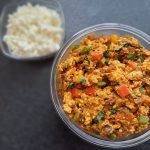
Ingredients:
- 1.5 litres of milk (whole milk is preferable)
- 2-3 tablespoons of lemon juice or vinegar
- Cheesecloth or a clean kitchen towel
- A colander
- Paneer maker vessel (optional)
- A heavy object for pressing (like a can or a heavy pot)
Instructions
Pour the milk into a heavy-bottomed pan and heat it over medium-high heat. Stir occasionally to prevent the milk from sticking to the bottom of the pan.
Bring the milk to a gentle boil. Once it starts boiling, reduce the heat and add the lemon juice or vinegar gradually while stirring.
As you add the lemon juice or vinegar, you’ll notice the milk beginning to curdle. The whey (greenish liquid) will separate from the curdled milk (the curds). If the milk doesn’t curdle completely, add a bit more lemon juice or vinegar.
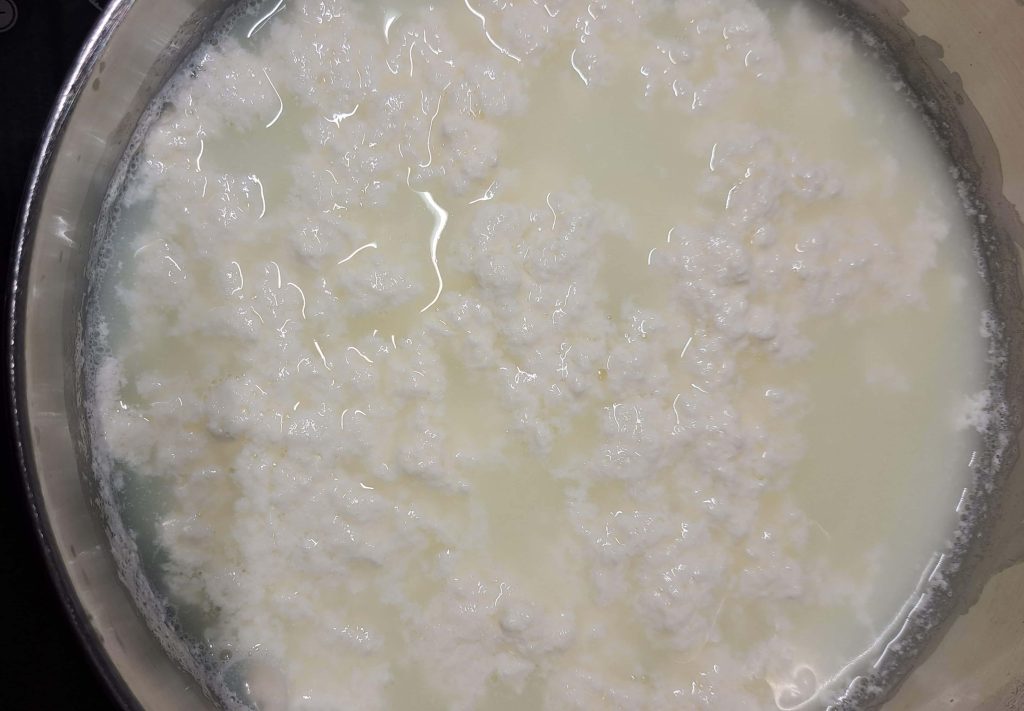
Once the whey and curds have separated, turn off the heat and let it sit for a few minutes.
Place a colander or the paneer maker vessel over a large bowl or in the sink and line it with a wet cheesecloth or a clean, wet kitchen towel. The panner vessel helps you to get a good shape of paneer. You can choose to get a round or a square vessel. I have attached the picture for your reference.
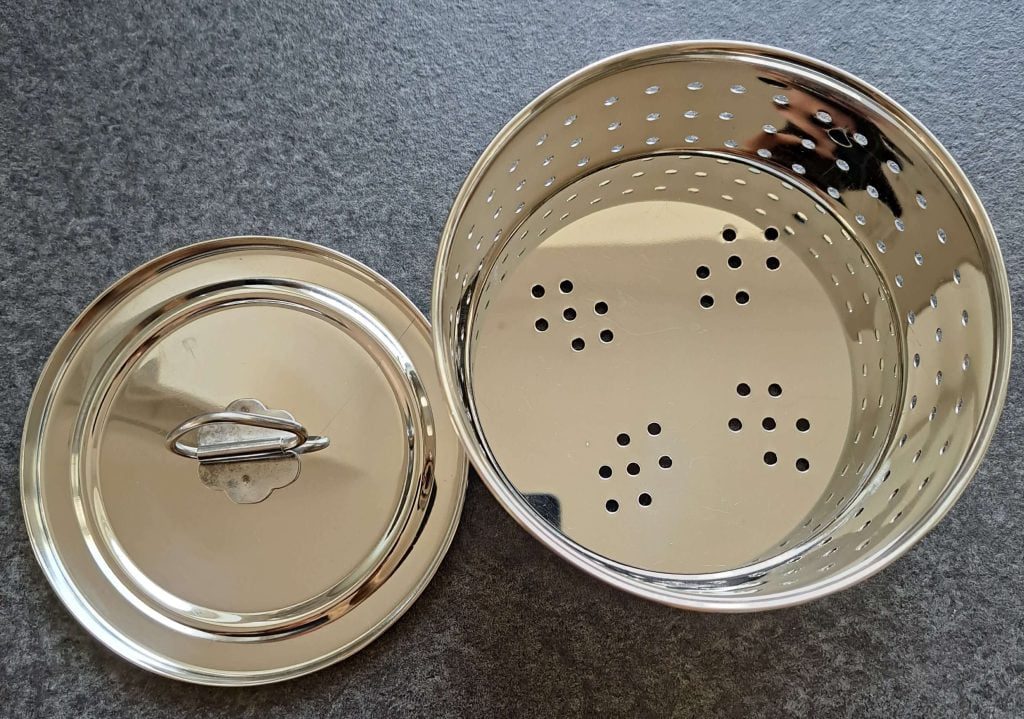
Carefully pour the curdled milk into the cheesecloth-lined colander. The whey will drain into the bowl, leaving the curds in the cloth.
Rinse the curds under cold running water to remove the residual lemon juice or vinegar, which can give the paneer an overly tangy taste. Squeeze the curds to remove the whey as much as possible.
Tie and Hang:
Gather the corners of the cheesecloth and tie them together to form a pouch with the curds inside. Hang this pouch in a cool, dark place for about 30 minutes to an hour to allow any excess whey to drain.
Press the Paneer:
Place the cheesecloth-wrapped paneer on the paneer maker vessel or colander and put a heavy object on top, like a can or a heavy pot, to press the paneer. Leave it for an additional 1-2 hours to ensure it sets well.
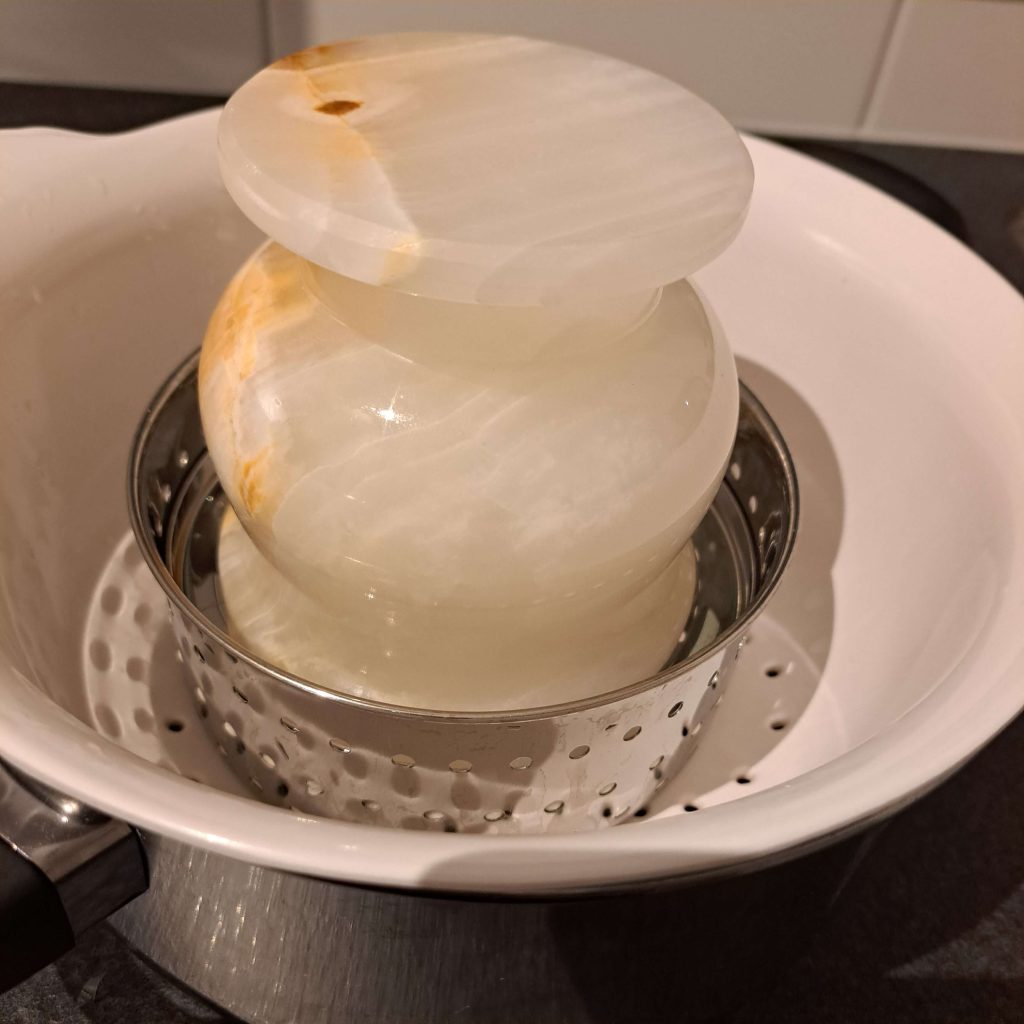
After pressing, unwrap the paneer and refrigerate for an hour to increase the firmness and this is purely optional. Now it´s ready to use in your favourite recipes. Slice and refrigerate for further use.
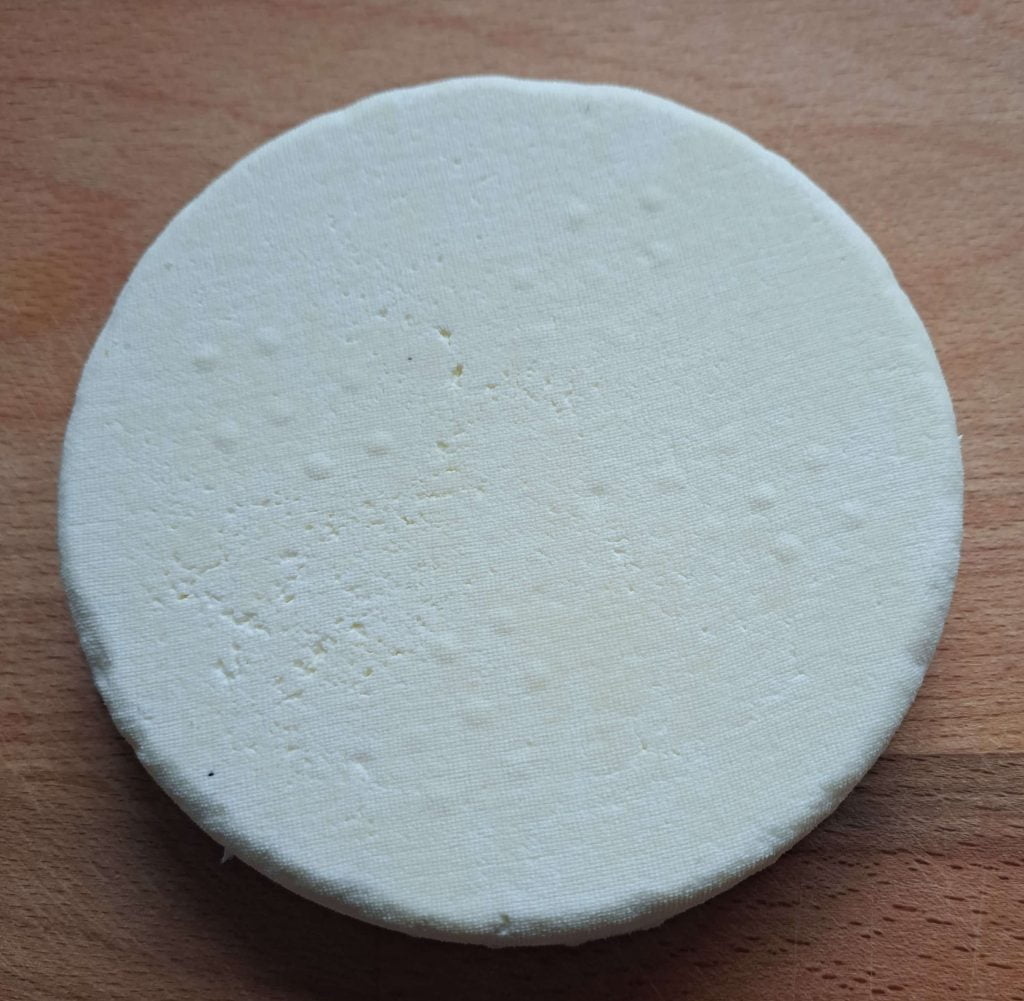
Click here for Paneer recipes.

4 thoughts on “How to make paneer/Indian cottage cheese at home?”